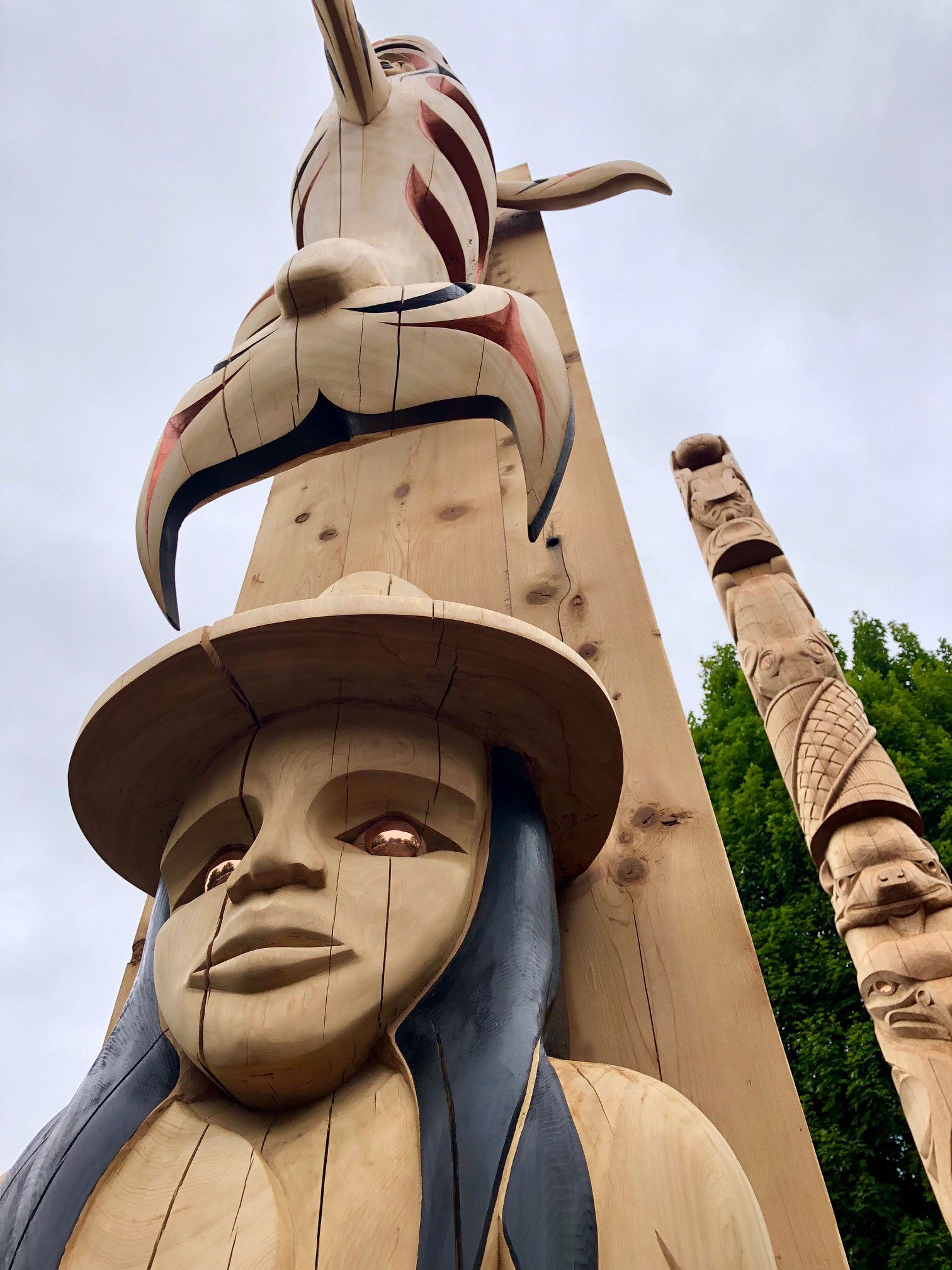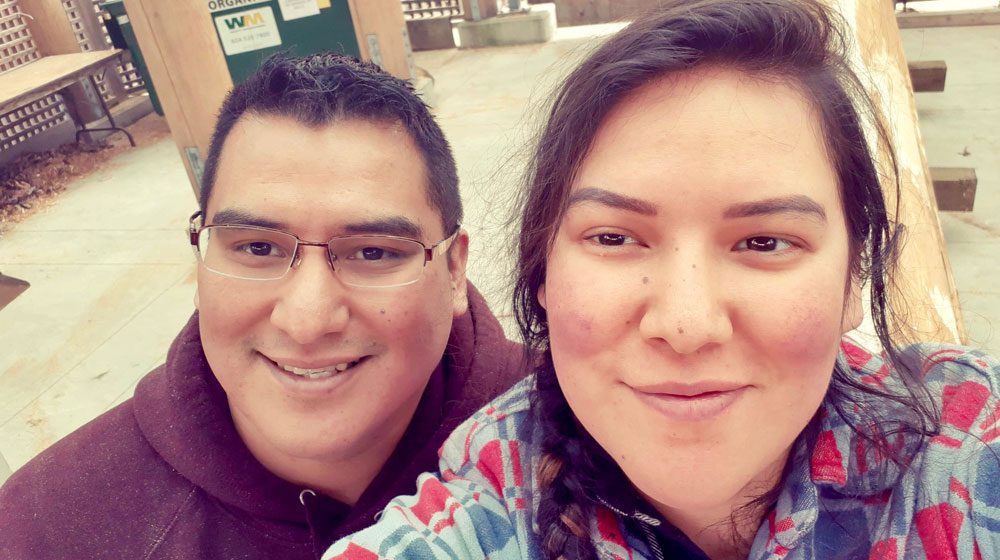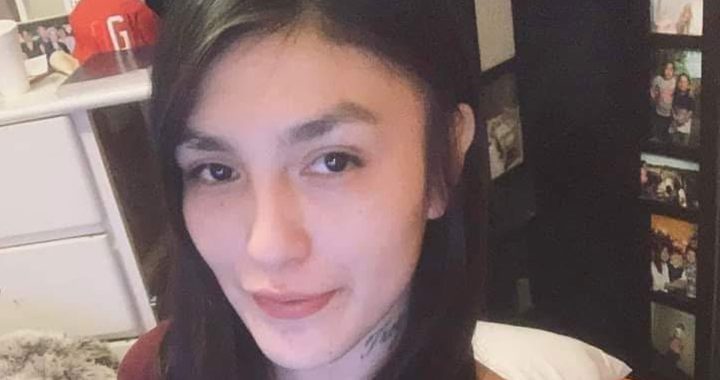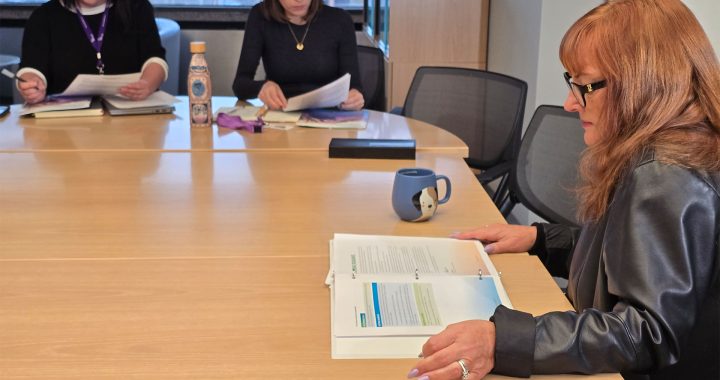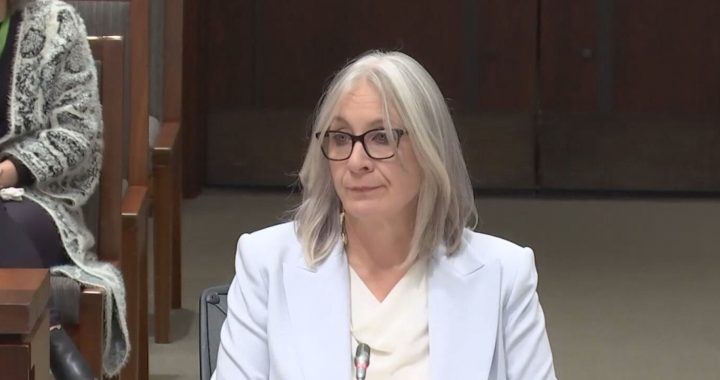Chrystal Sparrow is an artist, but not just any artist.
She’s a Coast Salish carver, which for a woman isn’t common.
“There’s still that stereotype with men who are like ‘did you carve that or did your brother carve that for you?’ No I carved it and yes I use a chainsaw and yes I use power tools,” Sparrow says while laughing.
(Chrystal Sparrow’s late father, Irving Sparrow. Photo courtesy: Chrystal Sparrow)
Chrystal’s late father was a master carver who saw her talent as a child.
“I am very proud to be a Coast Salish artist and more importantly that I was taught to be a Coast Salish artist,” says Sparrow. “I am third generation and my father, Irving Sparrow had decided when I was very young that I would become a female Coast Salish carver.
“And I had the privilege of learning first hand his experience through him carving in our kitchen, him talking about art and stories he heard from elders.”
(Musqueam artist Chrystal Sparrow taken in her A-frame studio residency. Photo by Laurie Hamelin/APTN)
Sparrow has had an exciting year.
She is finishing up her last week as the City of Vancouver’s inaugural artist chosen for their A-Frame Activation program in Stanley Park.
The old wooden A-frame fieldhouse by Second Beach is her studio.
The goal is for artists from either Musqueam, Squamish or Tsleil-Waututh Nations to engage the community on their unceded traditional territory.
“This art residency has been a really good experience,” says Sparrow. “I have had visitors come who are non First Nations and who are First Nations and it’s really been an opportunity to share my work and my views as a Coast Salish artist.
“But also it’s really been an opportunity to have conversations around what reconciliation is and more importantly awkward conversations around racism, around not knowing Coast Salish people were here or knowing little about Coast Salish people.”
(Welcoming Figure carved by Chrystal and Christopher Sparrow. Photo by Laurie Hamelin/APTN)
Sparrow also took part in carving one of three cedar poles outside the Vancouver school district’s education centre.
It was unveiled on National Indigenous Peoples Day.
Sparrow teamed up with her younger brother, Christopher Sparrow.
He’s also a carver.
Chrystal chose to carve a female welcoming figure in honour of her Coast Salish background.
“The female for me was such an important way to represent Coast Salish people and women like myself who play such an important role in our communities and our culture,” says Sparrow. “But also non First Nations women as a way to build a relationship, as a way to honour that we are all women and we are all important.
“And I have been told when people see her that she is such a calm presence, that there is a wisdom there and that is so neat to hear that.”
(Sparrow and her brother Christopher teamed up to carve Welcoming Figure, one of three totem poles unveiled on National Indigenous Peoples Day. Photo: Chrystal Sparrow)
Chrystal says the combination of her female figure and her brother’s killer whale is very powerful.
“There’s this warrior represented in the killer whale and there is this warrior woman-like figure that is embodying this strength, this energy, it feels alive,” says Chrystal. “When I see her I feel this presence about her.
“I feel like we’re connected and that she’s watching me.”
Sparrow is proud of her achievements and takes her art very seriously.
“I have this obligation, I have this opportunity to share my work,” she says. “Not only is it being seen as something important like house figures or panels or spindle whorls, but that it is a part of history, it’s living, it’s breathing. I am really honored to have a really important role in my community and that is being a Coast Salish artist.
“I am very proud of that.”
Sparrow’s next goal is to start her masters degree in expressive arts therapy in Switzerland.





